屍者の帝国 "The Empire of Corpses", the 2015 animated movie based on the book of the same name
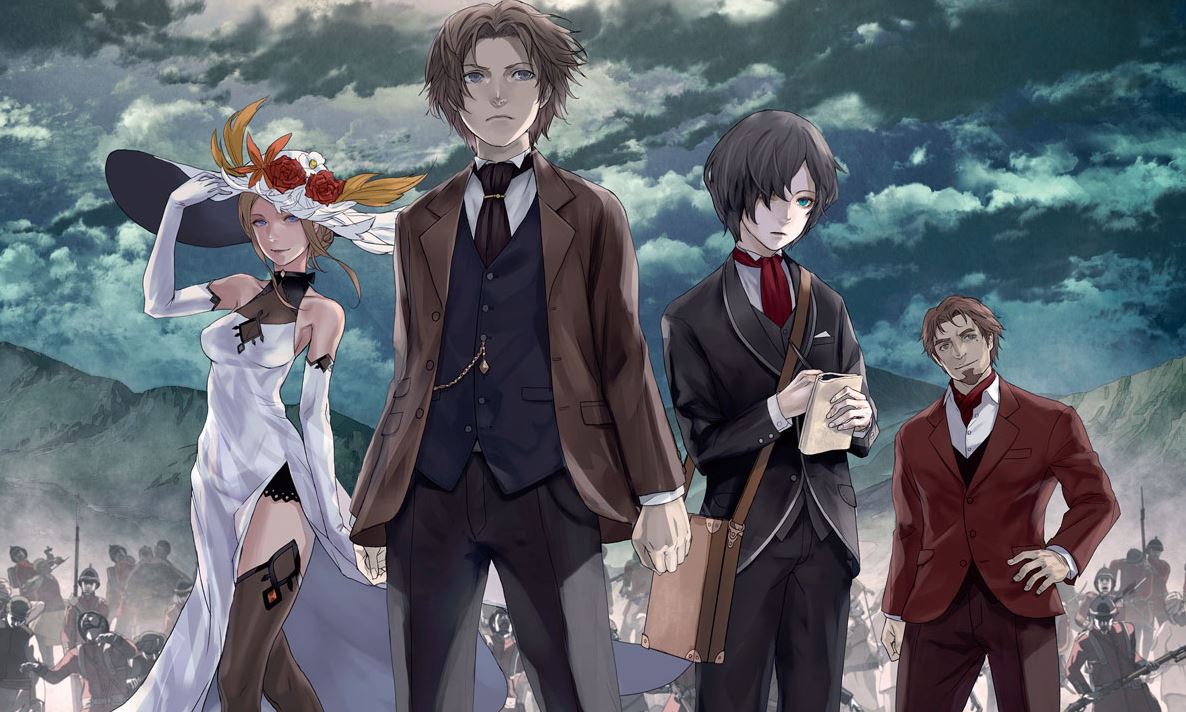
in the year 1818, a book called Frankenstein; or, The Modern Prometheus by Mary Shelly was published. it tells the story of a man named Victor Frankenstein who reanimates a conglomeration of body parts as a scientific experiment. it's often regarded as the first widely publicized pieces of science fiction literature and has had a huge influence on modern pop culture and namely the horror genre to this day.
Satoshi Itō, or better known as Project Itoh, was a Japanese science fiction writer and essayist who was friends with Hideo Kojima and even worked on the Metal Gear Solid 4: Guns of the Patriots novel tie in. Kojima would even show Itoh advance content to Metal Gear Solid 2: Sons of Liberty and Metal Gear Solid: Peacewalker to Itoh against the NDA standards of Konami at the time.
in 2012, three years after the death of Itoh due to cancer, the book Empire of Corpses, or in Japanese, 屍者の帝国 (Shisha no teikoku) would be published posthumously. the book was then turned into a movie three years after that, directed by Ryoutarou Makihara and produced by Wit Studio. Wit Studio is responsible for other popular anime shows like Attack on Titan, Vinland Saga, Ancient Magus Bride, and very recently Spy x Family.
You're probably going to ask why I'm talking about this book and movie in an essay for a Sherlock Holmes review blog. well, the main character's name is John Watson and yes, it is literally supposed to be that John Watson.
Warnings for Empire of Corpses is as follows:
the summary
in this alternate universe, the work perpetuated by Victor Frankenstein in the 18th century is real. he created The One, the original reanimated corpse that could speak and think. subsequently, this technology has spread all over the world and seems is mainly performed under governmental supervision to create undead soldiers and laborers. in the 19th century, the technology used by all these world powers is incomplete however, no one has been able to recreate Frankenstein's technique to basically re-animate the soul. instead, corpses are upgraded like computers with "Necroware" developed with the Analytical Engine, developed by Charles Babbage.
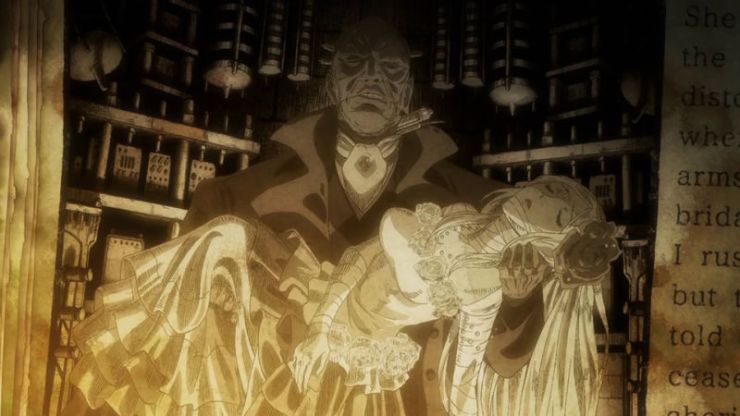
from the opening exposition about Victor Frankenstein and The One.
the story starts with John Watson illegally reviving the corpse of his friend, Friday, using Necroware. He's caught by M (yeah that M), and in exchange for not going to prison, he offers Watson to work for the British Empire. He is told to retrieve "The Memorandum", the original notes of Frankenstein, which are said to be in the possession of a Russian corpse engineer, Alexei Frodorovich Karamazov (yeah THAT Karamazov) who is hiding out in Afghanistan. Friday is given the job of being Watson's chronicler, programmed to write down everything the two of them encounter.
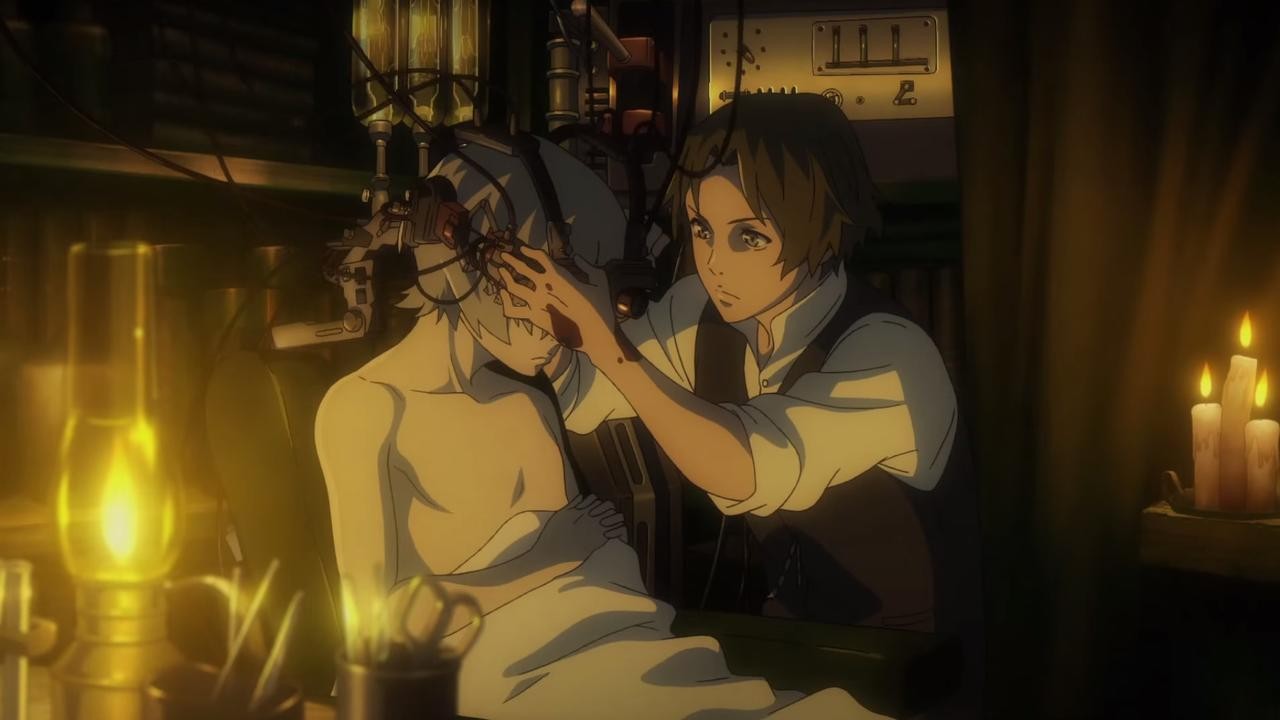
Watson and Friday are joined by Frederick Burnaby and Hadaly Lilith at different points, both saving their lives upon being ambushed by corpses, seemingly programmed to stop them from finding The Memorandum.
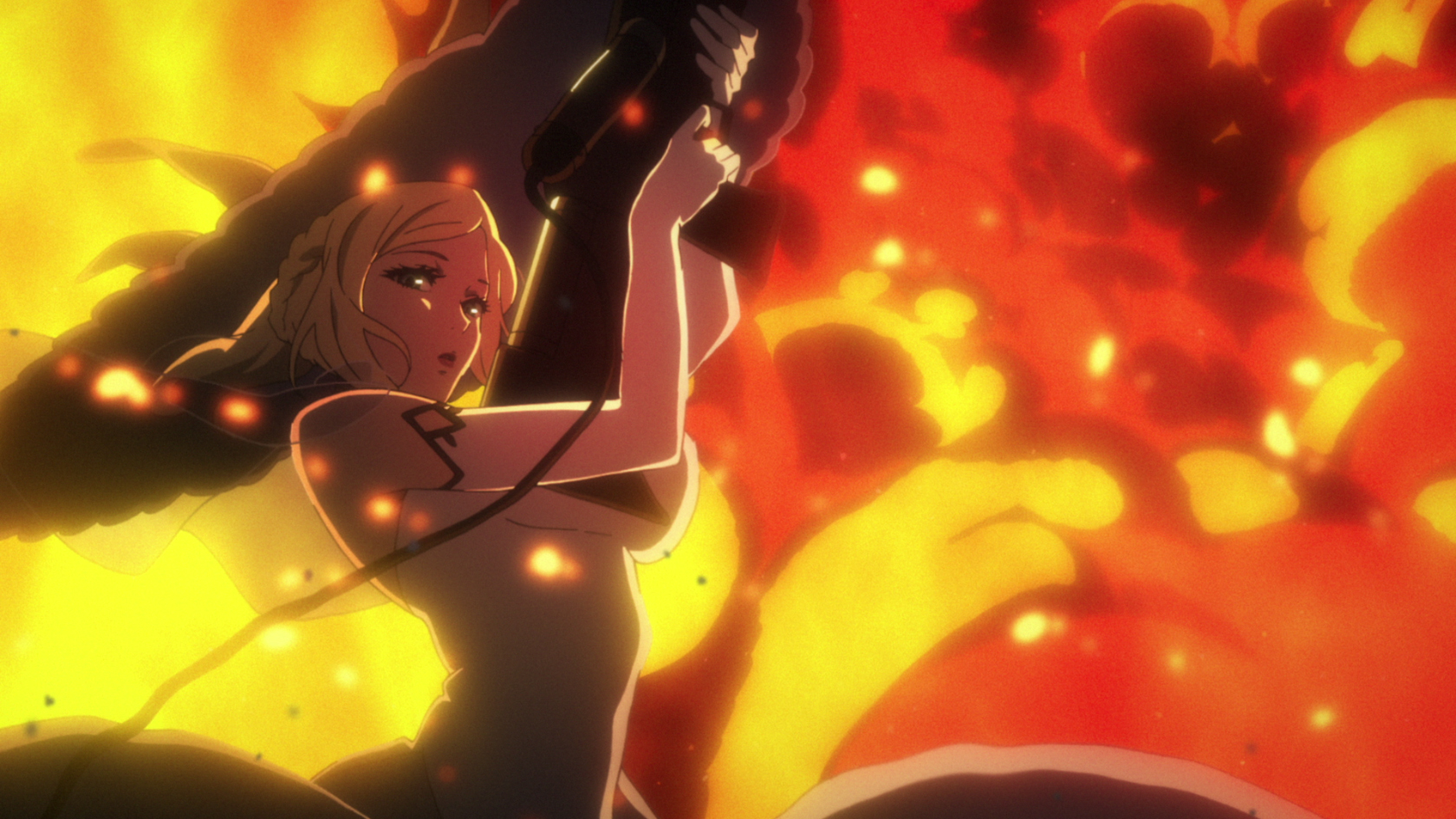
Hadaly's design is neat, but they do animate her boobs really weird at times.
the party reach where Karamazov is hiding out, an oasis for corpses that serve Karamazov. Karamazov reveals that the way to create a corpse with the ability to think and speak is to create them while the subject is still alive. he demonstrates this on his assistant, Nikolai, killing him by installing Necroware. Karamazov reveals that The Memorandum is in Japan and askes Watson to destroy it. Karamazov commits suicide by having Nikolai upgrade him with Necroware, leaving he and Nikolai to live out un-life among their corpse kingdom.
in Japan, Watson meets Yamazawa Seigo who reveals the location of The Memorandum, Osato Chemical company, a reference to the company in the James Bond Film, You Only Live Twice.
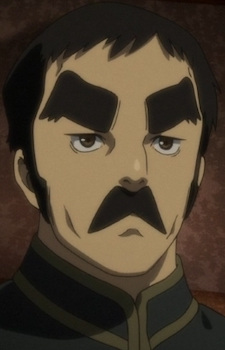
this is what Yamazawa Seigo looks like in the movie. i don't know why they made him look like this. i've seen the photo of him and his eyebrows are not nearly that big.
more advanced corpses attack the group as they go to retrieve The Memorandum, and when Watson retrieves it, it sets off a trap in the building to set it on fire and a wave of unknown necrotic energy that causes all corpses in the area to go berserk. Watson is injured and starts to lose consciousness and sees The One, Frankenstein's original creation and still alive after 100 years, take The Memorandum.
Watson wakes up on a US naval ship heading toward America where he's been treated by Hadaly for his wounds. Friday is still aggressive and chained up in the bottom hull of the ship. When the group reach San Fransisco, The One uses the Memorandum to send out a necrotic signal to cause corpses to attack any nearby humans. it's during this escape that Hadaly reveals that she's an android and has no soul of her own either. Friday attempts to kill Watson, but something in Friday recognizes Watson to make him pause, giving Watson enough time to subdue Friday and modify him so he's immune to the necrotic signal.
The One is interrupted by M who plans to kill all humans on earth and turn everyone into corpses, thus ending all wars, strife, and conflict. M takes The One to the Tower of London to use the Analytical Engine there to use The One and Frankenstein's preserved brain to increase the necrotic signal to cause corpses to attack humans from around the world. The group manage to reach the Tower of London and try to subdue M, but in the process frees The One.
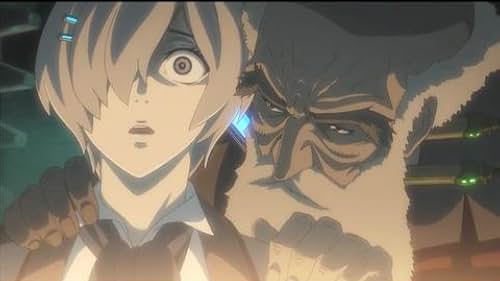
The One is the guy on the right there.
The One reveals that he's attempting to create himself the bride that Frankenstein promised him, by combining all corpse minds into a true human mind. He uses Hadaly to transfer his bride's soul into her body and transfer his own soul into Friday's body. this is interrupted by Burnaby damaging the Analytical Engine. Watson seals The One into the Memorandum and destroys the tower. in the wreckage of it all, Watson, Hadaly, Friday, and Burnaby survive.
in the end, Watson secretly uses the remaining parts of The Memorandum to upgrade Friday.
four years later, there's a post credits scene which shows Watson fleeing a building with his new companion Sherlock Holmes, while Burnaby and Hadaly, now going by Irene Adler, watch. Friday also watches from a rooftop, appearing to be fully resurrected.
context
sorry that's a long summary, but i've watched this movie a couple of times over the years so it's all very fresh in my mind i didn't really have to bring up a summary save for grabbing the names of characters i needed the spelling or reference on.
i think that's a pretty clear indication that i like this movie. Sherlock Holmes may be one of my special interests, but Frankenstein: A Modern Prometheus is another. to talk about this movie is to also talk about Frankenstein's monster, but also the book that this movie is based on. talking about "The Empire of Corpses" book is easier to start with, so we'll go with that first.
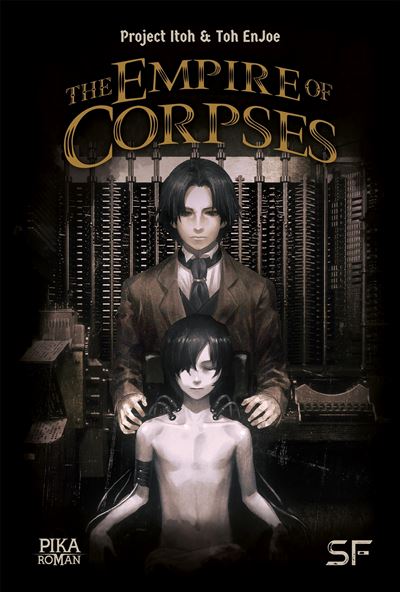
book cover from a french site where you can buy the book
you can't read the book in english. as far as i can tell, the book was never published in english and only ever received a French translation. there was apparently a bit of the prologue that was going around a few years ago that was translated into English (i read it at the time), but i'm unable to find that excerpt now and it looks like that translation went nowhere.
many people like me are disappointed that it's unlikely this book will see an english release. Project Itoh's work, while popular and notable within Japan, doesn't seem to have reached much acclaim outside of that country outside of the movie adaptation of The Empire of Corpses, Harmony, and Genocidal Organ. Genocidal Organ did seem to have an English translation, but it was Itoh's debut novel so it comes with a little bit more prestige than probably his later works.
The Empire of Corpses was also published posthumously, which probably doesn't help its chances at seeing an English release. French though? how strange that that's what it was translated into.
Now we should talk about Frankenstein. Can we talk about Frankenstein? I've been dying to talk about Frankenstein.
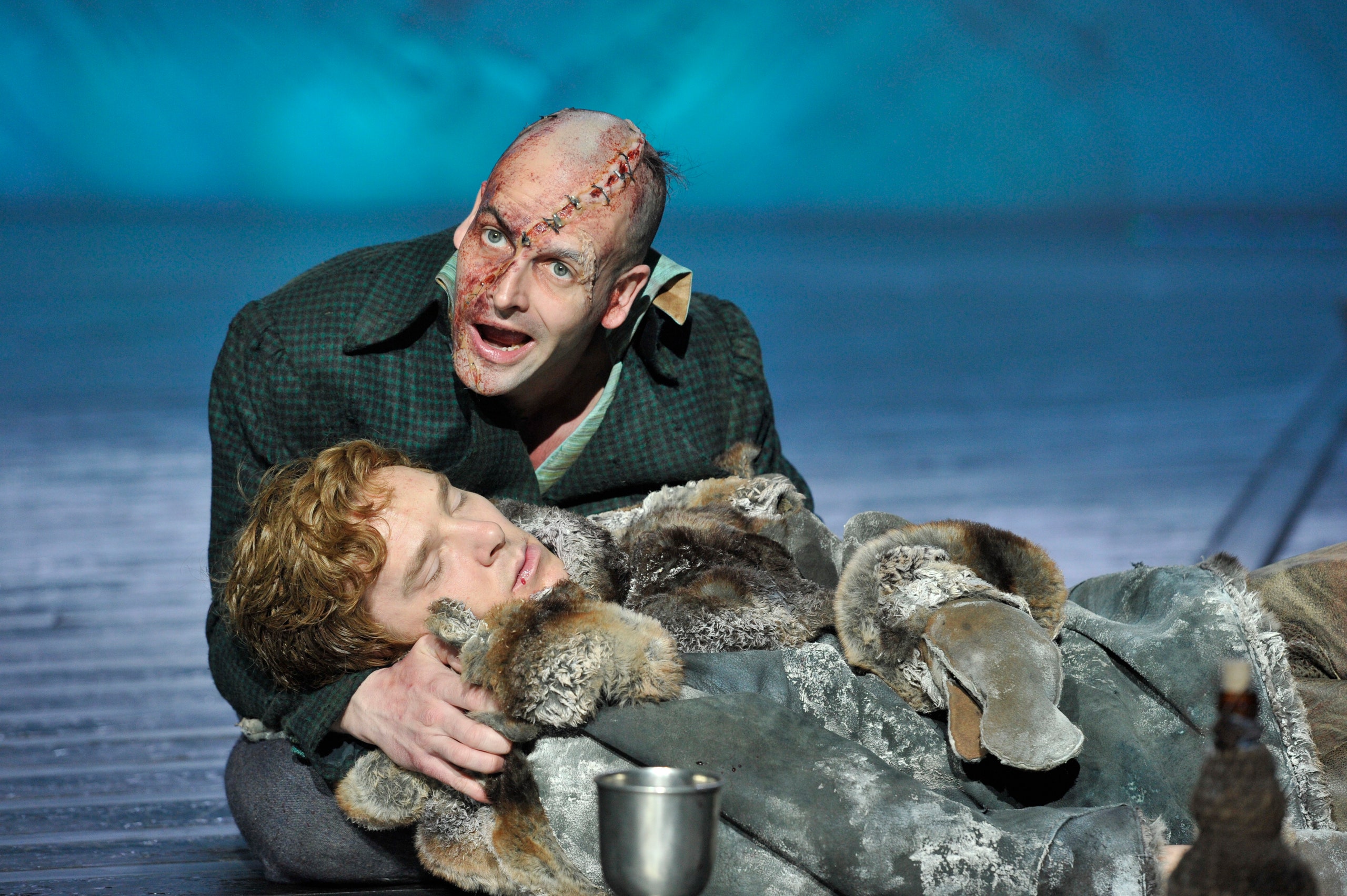
Jonny Lee Miller and Benedict Cumberbatch performed a filmed play adaptation in 2011 where either of them would switch off being the creature and being Frankenstein between performances. i watched the version where JLM was the creature and Cumberbatch was Frankenstein.
Frankenstein is a beautiful novel about the nature of humanity and at least to me, what it means to seek love and acceptance from a god who abandons you. Frankenstein, the man, is unsuited to be the object of holy devotion that the creature offers, much like any mortal man would be. No one can become god, yet Frankenstein got as close as one could by creating life from nothing but one's own intellectual spark and now contends with a demon of his own making, becoming a reaper to oppose Frankenstein by killing all of his loved ones and friends.
finding either to be unfit as god or death, the end of the book paints the creature and Frankenstein as equals, striving toward their mutual destruction. it's a tragic tale of hubris, power, and the separation of live and death. it fucking owns.
The Empire of Corpses feels like this echoes this notion, that the knowledge of Frankenstein is elevated so high that he's reduced to a brain in a jar attached to a 19th century super computer. he is the modern god, stripped of all recognizable parts of humanity, with a holy text that provides a solution to all problems each character faces as the answer to all of them.
in a world where death is not an end, you are still "serviceable". it creates a difficult horror to contend with. your body does not belong to you, your body belongs to whoever installs your meat with the machinery able to keep it running, all without "You" being there. it was not lost on me that in a story about the British Empire, the bodies of conquered countries and continents continue to serve their white skinned masters long after they had any say in the matter. The Empire of Corpses poses reanimation as another step of sinister colonialism, death is not a freedom from those that enslave you.
this is never truly commented upon in the film, yet it is one aspect about this story and film that's stuck with me since i watched it the first time.
personal connections
as a kid, i often would study my face in the mirror trying to pick out what parts of my parents constituted myself. my ears and eyes are distinctly my dad's. my hair, nose, and chin are my mom's. my body type is my dad's. my skin color is my mom's. i felt like i was an amalgamation of parts that was stitched together by genetics. what's more, because of my mixed race heritage, it would feel like these parts were in conflict with each other. i would hear my (usually white) peers talk about how "my nose is from [ethnicity]" or "my hair color is because im [ethnicity]" or the like. meanwhile, i had nothing i could contribute, i had my parent's features, but in combination nothing that could place me in any particular nationality category. no one would look at me and say "you look like youre [ethnicity i actually am]". no one could tell what my ethnic heritage was, or no one really bothered to ask.
what's more, i have felt a deep isolation from the non-white side of my genetic heritage that can be entirely blamed upon US colonialism like 3 times over. i grew up in mostly white areas, where my non-white side of my family are miles and even half an ocean away from me. i only ever got to see and be around people that looked even remotely like me in rare instances.
so i felt like a Frankenstein, pulled together from whatever parts were available, isolated from an education on what it meant to be a person within my heritage's culture, meant to serve white US capitalist and colonial ideals. whatever was left of "me" is what has existed since i was put together, nothing that was before.
since then, i've delved into a lot more research about my cultural heritage and managed to find pride and small community in what i can. it's hard. being ripped away from those parts of identity without any say in the matter is a generational trauma that's hard to recover from. but that's what colonialism does. it strips people of what ties them to the past leaving a hole you don't know how or if you'll ever be able to fill.
a gender reading
something else that can be connected to Frankenstein and the Empire of Corpses is the concept of gender. there's a lot of metaphor to be gained in the idea of "making a man" as it relates to being a trans man or trans masculine.
Frankenstein despairing during his education, literally makes a man. the descriptions of the creature give him extremely stereotypical and "ideal" male features: height and strength namely, obviously save for the "grotesqueness" of the rest of his body. the metaphor cannot be lost that Frankenstein, as an artist of skin and flesh, put a part of himself within the creature, as all artists do.
the creature learns chivalry and kindness from a blind man, he does not learn "toxic masculinity" until he is forced to contend with the prejudices of society. the expectations of his form and his appearance are laid upon the creature unfairly, much like how people make assumptions about people's gender and intentions simply upon their outward presentation. hell, the creature's gender is even assumed! i've been using the "he" pronoun this whole time to refer to him, but it could be that if the first person that the creature encountered outside of Frankenstein was a woman he might've identified more with her identity instead!
Empire of Corpses doesn't necessarily play in the same space as i've discussed, but there is something to be said about how the main corpse character, Friday, is quite gender neutral looking, even effeminate. "Friday" itself as a name is not indicative of any particular gender connotation either. The One by contrast is represented in a very masculine way, still huge and muscular but bald with a beard, more very "typically male" traits. these two in combination of each other makes these design choices feel very intentional. there's also a pretty transgender reading that can be had here for The One wanting to transfer his soul into Friday's body and the nature of the MacGuffin of the film being an object that can transform the body and/or soul of an individual toward an intended desire.
my actual review of the media that brought up all of this context
the movie is fine. it can be poorly animated in areas, some action scenes are just not very well done i think out lack of budget. some of the pacing gets really weird, like jumping all around the world and finding convenient reasons to do so, but it works for the most part.
but i will say i like this movie. i've watched it at least twice and i own the art book. i like Watson and Friday and Hadaly.
if my links during the summary are any indication too, this movie is a complete reference-fest, and not being up into James Bond lore or movies some things were probably lost on me.
this movie is very concerned about what constitutes the soul, what that means and what beings are able to have them. it makes for a pretty easy message to understand, the antagonists ideals are directly related to it, even M's motivations are effectively about removing personhood and soul from every being for his own selfish ideals. this never gets very deep though, and from my own analysis from earlier and personal anecdotes, this movie is far more interesting as a piece of art to think about with some flashy animation and action scenes in between.
it makes me want to read the book, like many others with me. but i'm not about to learn french in order to make that happen just yet.
getting reviews on anime is a little bit hard to compile, but luckily there's a reddit thread dedicated to just that.
i won't bother with quoting some of the people but the consensus is that the ending and the meaning of the story was confusing. i disagree with that, i think it's pretty straight forward. people are wondering what Watson "did" to bring Friday actually back to life and feel unsatisfied with the non answer they got, but that's completely in line with the original Frankenstein novel. Mary Shelly never wrote the method Frankenstein took to make The Creature. it just feels appropriate that this movie would do the same.
anyway, below i've provided the english dub trailer for the movie. i think its quite nice and neatly and quietly sets up the intrigue of the movie, and it almost made me want to watch it again. maybe i will.
art book pictures
i mentioned that i got the film's art book and it's pretty interesting to see the design and concept work that went into this movie. here's a few pages from it:
Friday reference
Early Friday concepts
composition of the opening scene
Necroware design layouts
Hadaly concept art
oh P.S.:
here are some photos of the creature puppet from the Hamburg State Opera performance of Frankenstein:
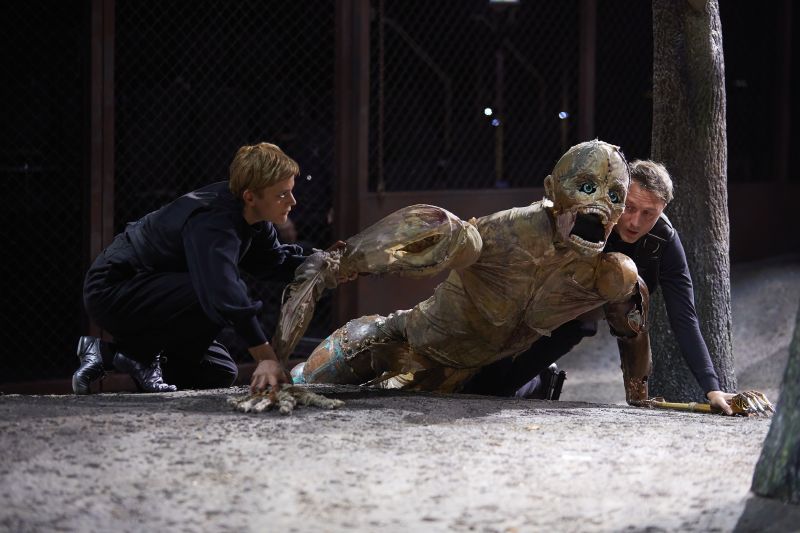
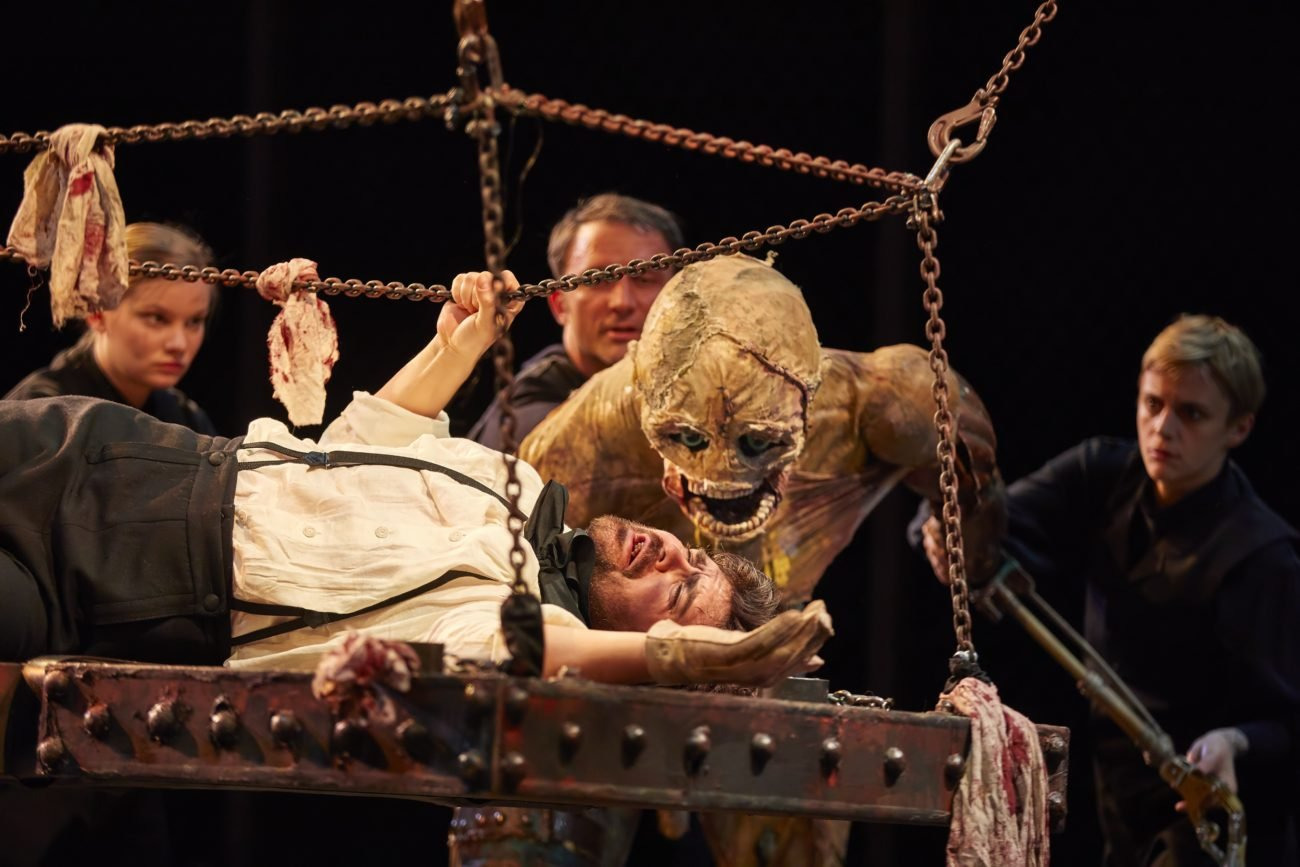
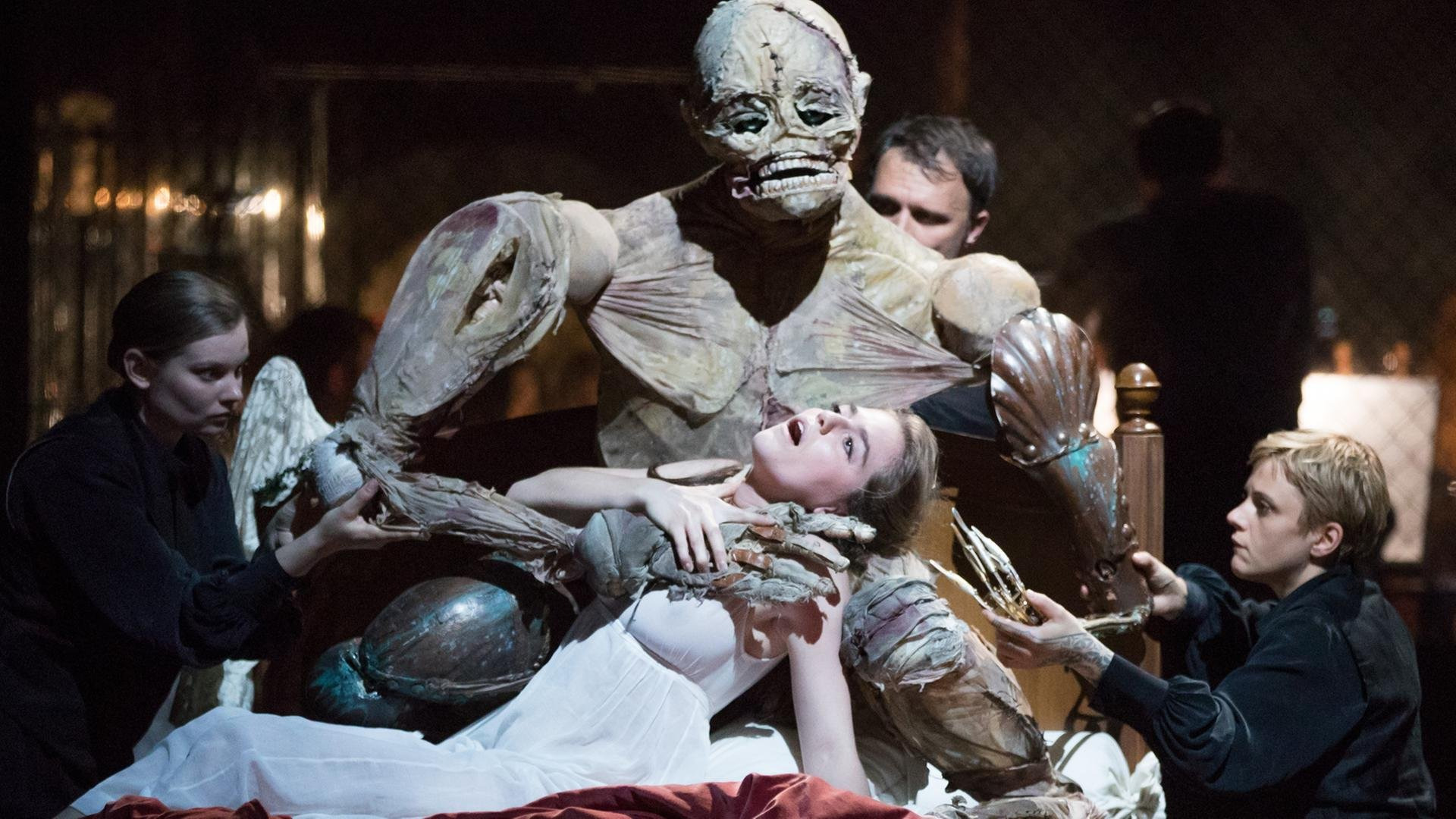
i would never be able to share these on any other post, but i think this is the first and only rendition of the creature that i think demonstrates how horrific it would be to reconstitute a person from an amalgam of parts. it's uncanny and terrible in all the right ways.
P.P.S:
i'll leave you with this. i made this edit of Friday in 2016 with a beautycam app and it's lived on my phone since. i've never posted it online before now.